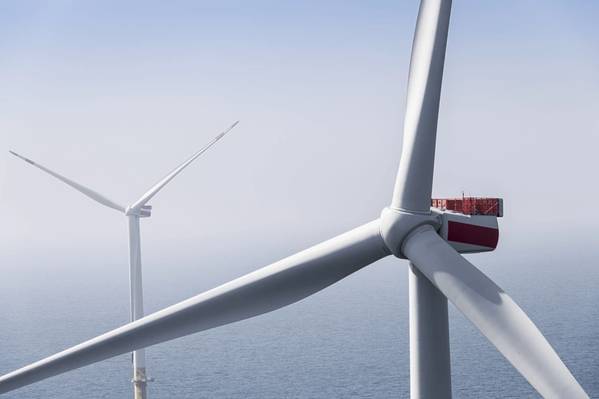
Offshore wind developer Parkwind said Thursday that it had installed the final three turbines of its 27-turbine Arcadis Ost 1 offshore wind farm, marking the first time that turbines at a commercial fixed-bottom wind farm were installed using a floating vessel and not a jack-up unit.
Parkwind stressed that the turbines had been installed during the stormy autumn season in less than 8 days, to complete construction of the "world’s first fully floating installed commercial offshore wind farm off Germany's Baltic Coast."
"Heerema Marine Contractors, Vestas, and Parkwind worked closely together to overcome tempestuous weather conditions to install the turbines rapidly using a purely floating installation method, thus canceling the need for jack-up operations. This installation method was chosen to better cope with the particularly challenging seabed conditions in that part of the Baltic Sea," Parkwind said.
“This is a huge feat of engineering by the three teams and together we have been able to redefine how offshore windfarms are installed,” said Eric Antoons, Co-CEO of Parkwind. "Special thanks go to our colleagues on board the THIALF who have made this particular success possible."
With all 27 wind turbines now installed, the teams will continue their offshore activities with cable termination and commissioning work, Parkwind added.
Arcadis Ost 1 is a 257 MW offshore wind farm developed in the German territorial waters of the Baltic Sea, northeast of the island of Rügen. The wind farm will supply enough electricity to power the equivalent of 290,000 households.
Floating Installation
The plan to use a floating installation method for Parkwind's Arcadis Ost 1 was announced for the first time in November 2019.
In November 2022, the companies executed the floating installation of the first Arcadis Ost 1 turbine using Heerema Marine Contractors' Thialf semi-submersible crane vessel.
According to the parties involved, the floating installation method has two main advantages; the first is zero seabed interaction especially important in areas of significant water depth or challenging soil conditions; the second advantage is a shorter installation cycle.
According to Parkwind, to speed up the installation process, assembly and lifting operations are happening in parallel.
One of the Thialf’s two main cranes lifts the pre-assembled WTG-tower to the foundation, while the second main crane is used to pre-assemble the WTG in parallel.
For the latter, Heerema developed a method where the Rotor Nacelle Assembly lift takes place on a so-called “support” tower on board of the crane vessel.
The support tower provides a stable platform to allow a fast and secure assembly of the nacelle and the blades, Parkwind explained.
Once pre-assembled the complete Rotor Nacelle Assembly is lifted as one piece onto the WTG tower in only one lift.